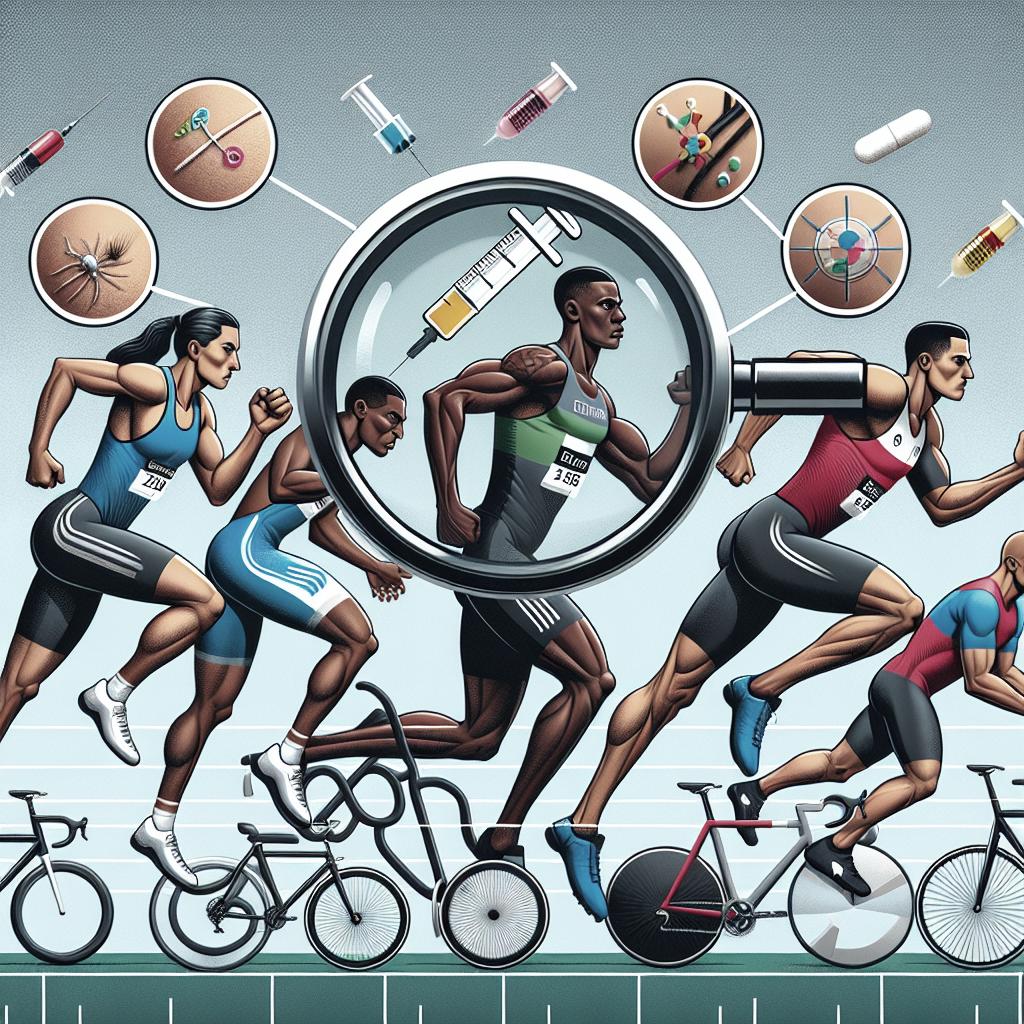<>
“`
We’re here to help
In today’s competitive sports world, the temptation to use performance-enhancing drugs (PEDs) is higher than ever. While many athletes train hard and compete fairly, some resort to doping to gain an unfair advantage. Recognizing the signs of doping is crucial for maintaining integrity in sports and protecting athletes’ health. This blog post will outline the physical, behavioral, and performance-related indicators of possible doping. We will also discuss the importance of advanced testing methods and offer insights into maintaining clean and fair sports practices. By understanding these signs, coaches, officials, and fans can contribute to a level playing field and celebrate genuine athletic achievements.
Thank you for subscribing!
Physical signs are often the most immediate indicators of potential doping in athletes. Sudden and dramatic changes in physique can be a red flag. For example, an athlete who rapidly gains muscle mass without a corresponding increase in their training regimen and diet could be using anabolic steroids. These substances promote muscle growth beyond natural limits and often result in an unusually bulky and toned physique in a short period. Additionally, unusual patterns of acne or rapid hair loss can also be indicative of steroid use. Steroids can disrupt the body’s hormonal balance, leading to these side effects. Hence, coaches and team doctors should be vigilant if they notice such sudden and unexplained physical alterations that could point towards the use of PEDs. Behavioral changes can also be telling signs of doping. Mood swings or aggressive behavior not in line with the athlete’s usual demeanor might indicate the use of stimulants or certain types of steroids. These substances can have significant psychological effects, leading to increased irritability, aggression, or even depression in athletes. Another behavioral indicator is the athlete’s relationship with testing procedures. If an athlete frequently misses tests, exhibits anxiety around testing times, or consistently provides excuses to avoid them, it could be a sign that they have something to hide. Regular observation and communication can help trainers detect any such suspicious behaviors early on.
Sorry something went wrong with your subscription
When it comes to performance, drastic improvements in a short timeframe without substantial changes in training intensity and functionality metrics should raise concerns. If an athlete suddenly starts breaking personal or even world records without a logical explanation in their online training logs, it may be due to the use of performance-enhancing drugs. Recovery rates that appear to defy logic are another sign. Athletes recovering unnaturally quickly from intense training sessions or injuries might be using substances that accelerate the body’s healing processes. While advanced physiotherapy and nutrition can aid recovery, certain PEDs can offer unrealistic recuperation times. Scientific and technological advancements have introduced more robust and intricate testing methods in sports. Biological passports, for instance, track an athlete’s biological markers over time to identify doping. These markers include blood and hormone levels, which can reveal the use of banned substances even if the athlete isn’t caught directly in a single test. By monitoring these parameters longitudinally, discrepancies indicative of doping can be detected. Furthermore, organizations like the World Anti-Doping Agency (WADA) continue to evolve and enhance their testing protocols. The adoption of more sensitive and specific tests helps ensure that even new and less-known doping agents are identified. Educating athletes about these advancements can deter them from attempting to dope, knowing that the chances of getting caught are higher than ever.
Next steps
In summary, recognizing signs of doping involves a comprehensive understanding of physical, behavioral, and performance-related indicators, backed by advanced testing methods. Everyone involved in sports, from coaches to officials and fans, has a role in maintaining the integrity of the competition. By staying vigilant and informed, we can support clean athletes and ensure fair play in all sporting arenas.
| Category | Indicators |
|---|---|
| Physical | Sudden muscle mass gain, unusual patterns of acne, rapid hair loss |
| Behavioral | Mood swings, aggressive behavior, anxiety around testing, frequent missed tests |
| Performance | Drastic performance improvements, unnatural recovery rates |
| Testing Methods | Biological passports, advanced and evolving testing protocols |
“`


